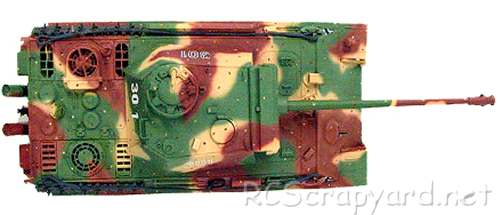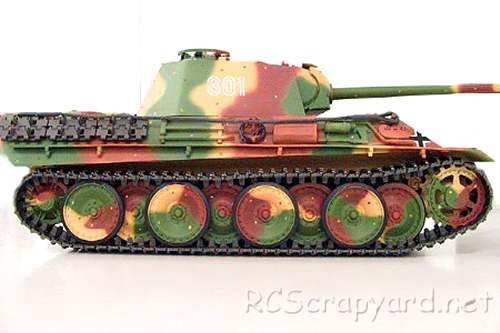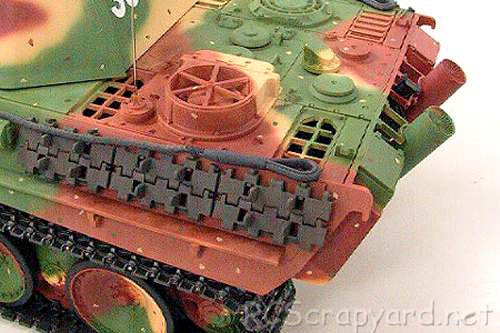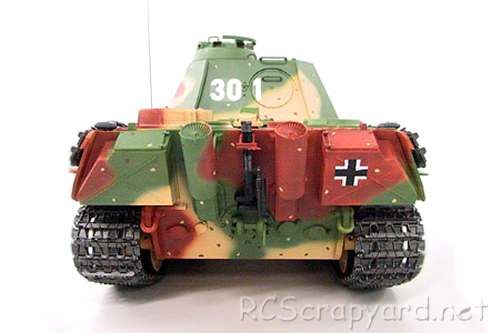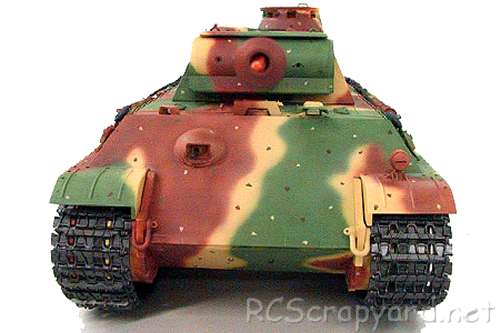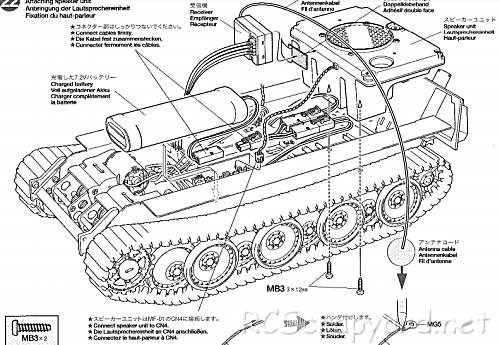Tamiya German Panther Type G - RTR - # 23659
(Radio Controlled Model Review)
1/16 Scale Electric Tank -
Released by Tamiya on December 17, 2008, the German Panther Type G (# 23659) is an Online Limited Sales Series version, Factory Finished, Limited Edition, with the DMD Control Unit, MF-01 Unit and a 4-channel transmitter in an aluminium case.
The front-mounted gearbox contains two Type 380 motors that can operate together or individually to produce forward/reverse running and pivot turning. Metal torsion bars and suspension arms combine with the wide tracks to smoothly absorb bumps and dips in the terrain and provide high manoeuvrability. In addition, realistic engine sounds accompany the tank as it starts up, drives and stops to idle. The main gun can be elevated, depressed and swung to the left and right.
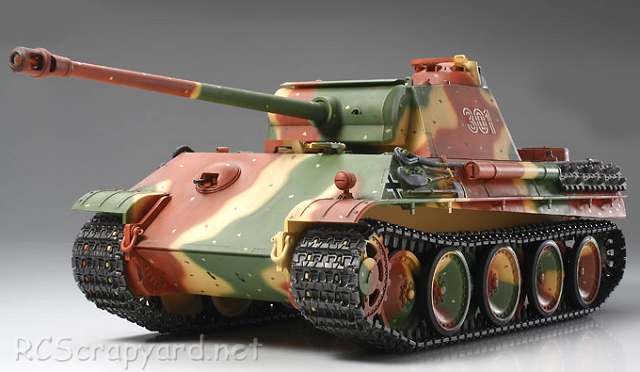
▼ Scroll Down for More Images ▼
At the beginning of WWII, German tanks were defeated by Russian T-34 medium tanks and in order to counter them, Germany created the Panther V and were deployed to frontlines in 1943. It featured excellent defensive abilities, had sloped armour plates, powered by a 700ps Maybach HL230P30 4-stroke V12 gasoline engine which provided them with a top speed of 55km/h.
It was armed with a 70 calibre 7.5cm long barrelled tank gun which was as powerful as the Tiger It's 8.8cm gun. Evolved from the Type D and A, the Panther Type G was put into production from March 1944.
Later in 1944, the Type G received more extensive modifications which included an angle-bottomed gun mantled, exhausts with flame dampers and heater units on top of the engine grilles. Overall 2,953 Panther Gs were produced until the final factory was captured by Allied forces in April 1945. The Panther G went on to serve as Germany's main battle tank until the end of the war.
This model comes with metal bushings, that after a short while, when dust and grit get into them, can actually wear into the metal drive shafts that spin in them - we recommend these should be replaced by a full set of steel shielded ball bearings ASAP.
Rating: 4  RCScrapyard
|














